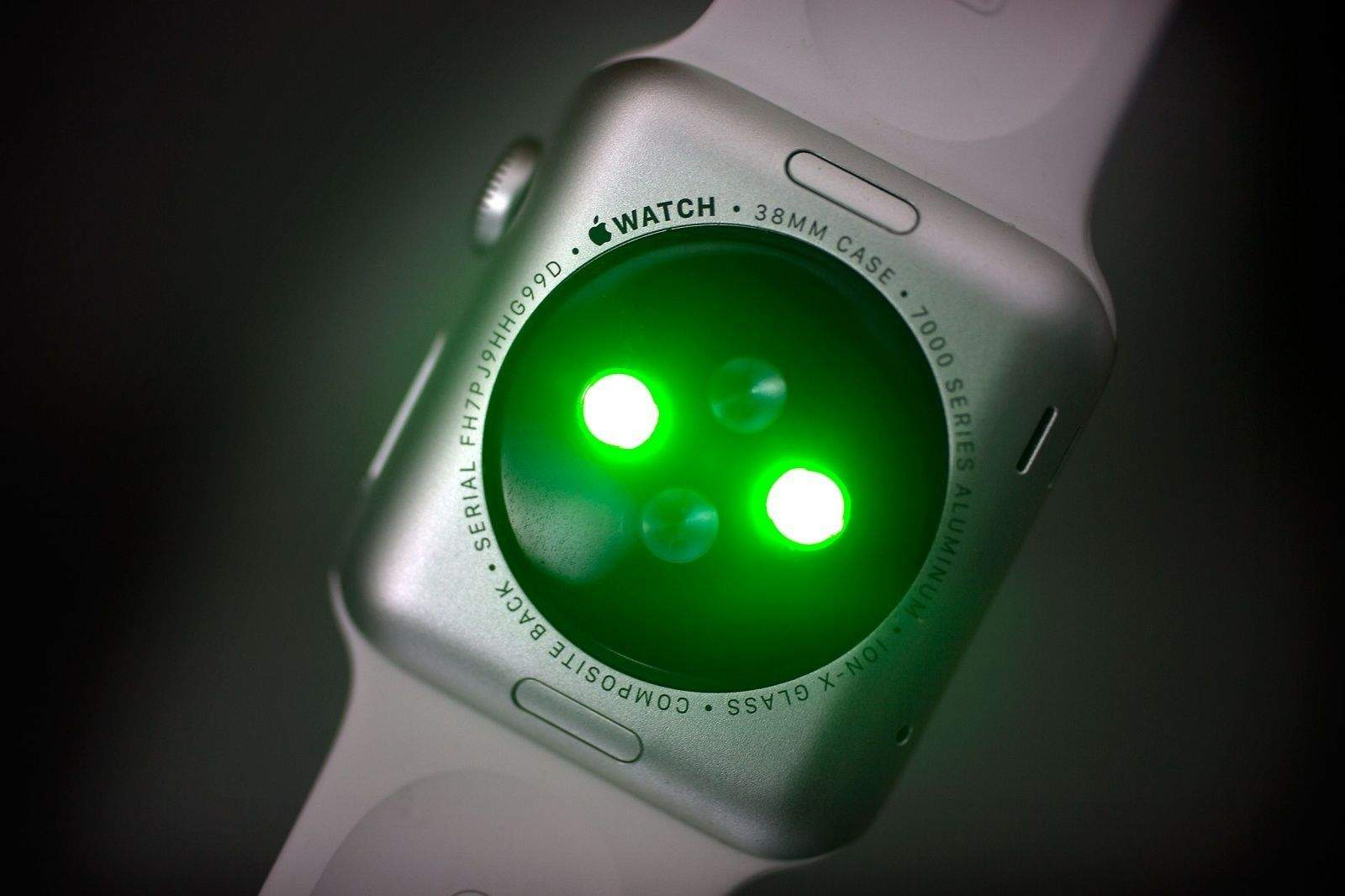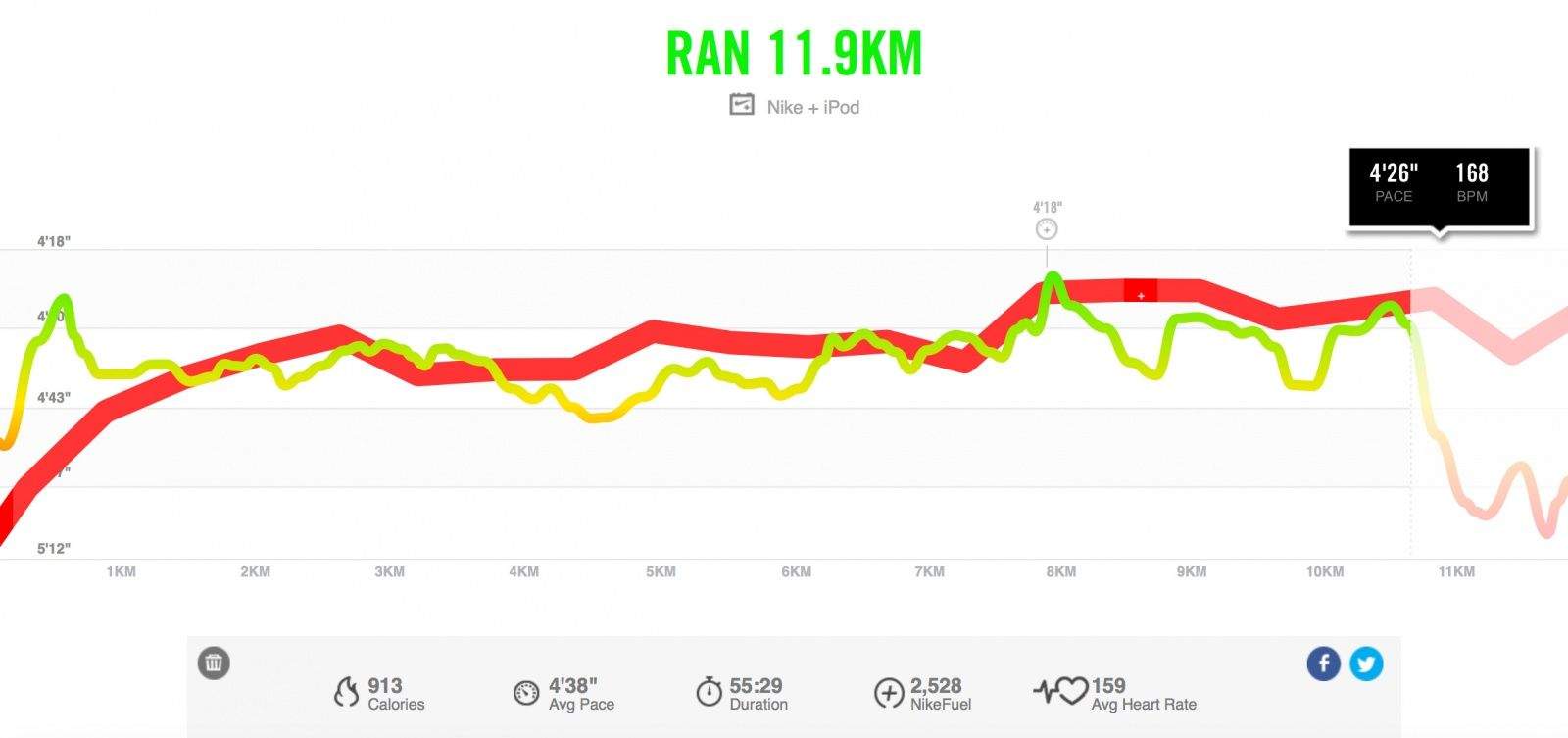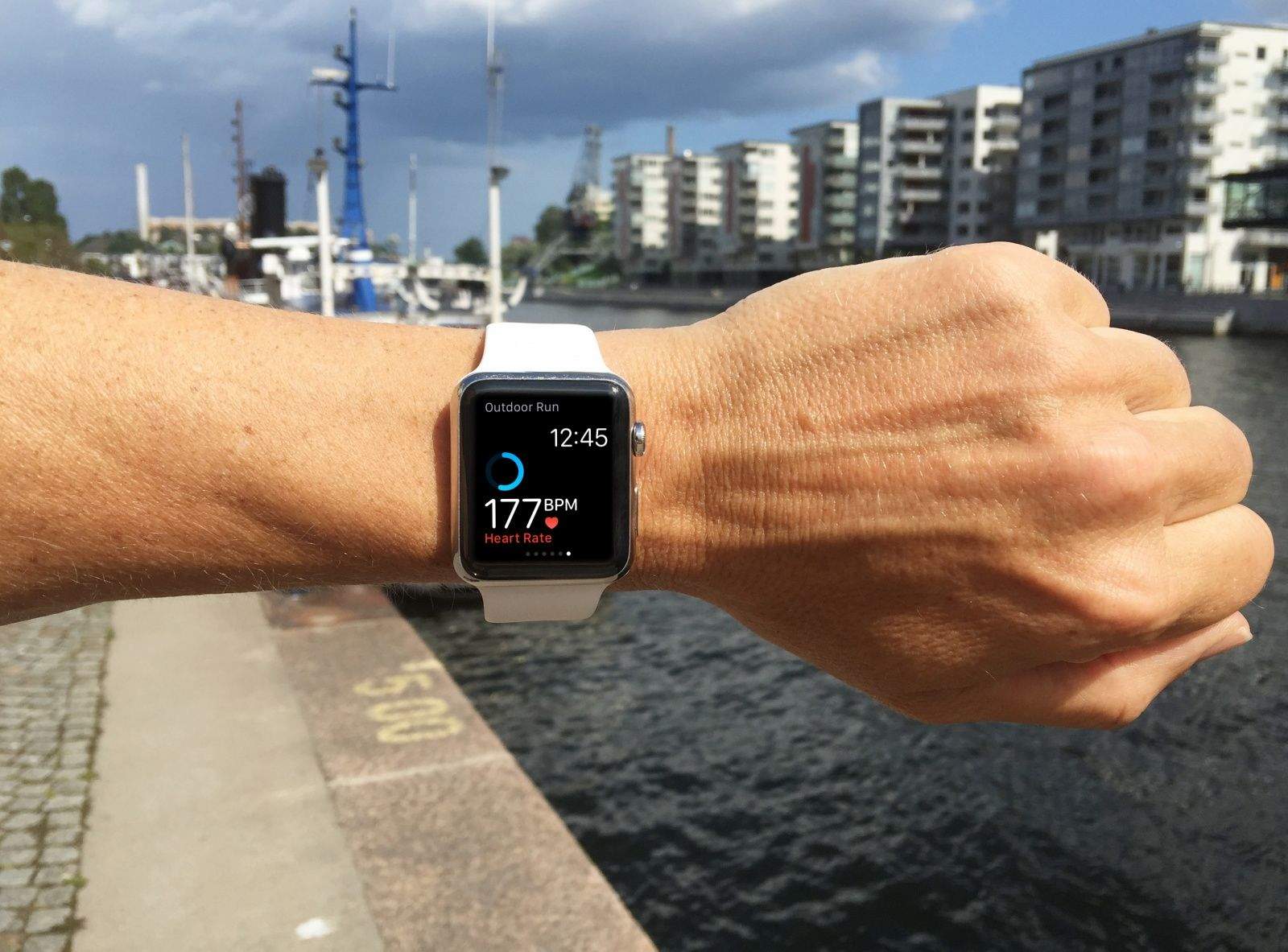When you run with Apple Watch, swiping to the right in the Workout app reveals your heart rate. Does the device display this data just for curiosity value, or can Apple Watch heart rate information actually improve your running?
Green versus infrared LEDs: the difference with the Workout app
Apple Watch checks your heart rate every 10 minutes. Or at least, it did until Apple updated the watchOS to version 1.0.1. Now it only checks your pulse when your arm is not in motion, which has left a lot of users up in arms.
That could also be bad news for runners. It is hard to run without moving your arms. Fortunately, Apple Watch has two modes for heart rate monitoring. Regular checks are done using an infrared LED when your arm is still. But when you use the Workout app, it switches to a green LED that monitors your heart rate continuously while you are moving.
The difference between the infrared and green LED modes is obvious when you check the Health app on your iPhone. You can find your heart rate readings listed under Vitals in the Heath Data tab. On an average day, my Apple Watch logs around 20 heart rate readings. But on days when I use the Workout app, there are hundreds of additional readings, taken about 10 times a minute during the workout.

Photo: Jim Merithew/Cult of Mac
Since Apple does not currently allow third-party developers access to the Apple Watch heart rate monitor, if you are using apps like Nike+ Running or Strava, you are out of luck. The release of watchOS 2 this fall should address the issue, but in the meantime, you can use Bluetooth heart rate sensors that strap to your chest instead, like the Polar H7. An advantage to using Nike+ Running or Strava is that these services provide charts of your heart rate during your run — something Apple does not yet offer.
What does your heart rate actually tell you?
To make use of your Apple Watch heart rate sensor, you need to understand what the data it captures is actually telling you.
When you are running, your muscles work harder, which means they need more fuel. This fuel is supplied via the blood that your heart pumps around your body. And the more fuel your muscles need, the faster your heart has to pump in order to supply it.
Your heart rate is measured by the number of times it beats per minute (BPM). It tells you the rate at which your muscles are consuming fuel. Or in other words, how intensely you are exercising.
This is useful to know because the workout intensity that is right for you depends upon your fitness and goals.
Finding your resting and maximum heart rates
Your heart rate is at its slowest when you are resting, because your body is not using much fuel. So a good time to check it is just after you wake up.
If you normally put on your Apple Watch each morning while you are still in bed, then the first readings of the day will be your resting heart rate. For an accurate figure, take an average of these readings over a week. Typically this is somewhere between 60 to 100 BPM.
Your maximum heart rate is the fastest your heart can safely go. This varies a lot from one person to another. One rule of thumb for estimating it is to deduct your age from 220. For example, I’m 44 years old, so according to this formula, my maximum heart rate would be 176 BPM. (220-44=176).
Get in the zone
Once you know your resting and maximum heart rates, you can use the Apple Watch heart rate sensor to estimate the intensity of your workout and target the “heart rate zone” at which you want to train.
As with any new exercise regime, before you strap on your running shoes for the first time, check with your doctor — especially if you have an existing heart condition. Also, be aware that some medication can have an effect on your heart rate. So you need to discuss heart rate training with your doctor before you begin.
Moderate exercise, like a brisk walk, is usually around 50 percent to 69 percent of your maximum heart rate. Intermediate exercise, like jogging, is around 70 percent to 80 percent, and anything above is considered hard exercise (like sprinting).
You can maintain light exercise for much longer than hard exercise. For example, many people could comfortably maintain a brisk walk for an hour, whereas you might struggle to sprint for more than a few seconds. Hence light exercise tends to be performed continuously, whereas hard exercise is performed in short bursts, with rest intervals in between (often referred to as “high intensity interval training,” or HIIT).
Traditionally, the 50 percent to 69 percent zone was considered the “fat-burning zone” and was thought to be optimal for people wanting to lose weight. Intermediate exercise like jogging was considered best for improving fitness, while hard exercise was for performance athletes.
Recent research, however, has show that HIIT can be an effective means of helping weight loss. The advantage of the fat-burning zone is that you can sustain it for longer, meaning you burn more calories. The advantage of HIIT is that the intensity of the workout can increase the calories you burn as you recover after the workout.
The problem with heart rate monitoring
Heart rate zone training is appealing because it seems very precise and scientific. The reality, however, is rather different.
For starters, the “220 minus your age” formula is not very accurate. It gives me a maximum heart rate of 176 BPM, but in reality I routinely exceed this during intense exercise.
Also, as you get fitter, your heart becomes stronger and more efficient, delivering a great volume of blood with every beat. As a result, your heart rate will lower over time, because your heart does not need to beat as often to perform its job. This is why an untrained individual may have a resting heart rate of 80 BPM, whereas for a professional athlete it might be as low as 40 BPM.
With such major variances from one individual to another, you must take care when interpreting your heart rate readings. What is normal for one person might not be for someone else. Fortunately, however, there is another way to assess what zone you are training at — and it is pretty accurate and you don’t need any fancy sensors.

It’s the Borg! Run!
Swedish scientist Gunnar Borg made an unsurprising discovery back in the 1970s. He found that if you ask people how intense their workout is, they usually have a pretty good idea.
Based upon this insight, he came up with the Borg Rating of Perceived Exertion, or RPE. You can measure RPE on the Borg scale, from 1 to 10, where 1 is no exertion at all and 10 is running as fast as you can … like you are escaping from the Borg. On this scale, moderate exercise is something like a 3, whereas hard exercise is anything above a 5.
To use the Borg scale when you are exercising, just ask yourself on a scale of 1 to 10, how intense does it feel? With practice, you’ll get more in tune with your body and get better at recognizing what the different training intensities feel like. And by comparing your rate of perceived exertion with your heart rate, over time you’ll get a better idea of what your heart rate looks like in each of the training zones.


